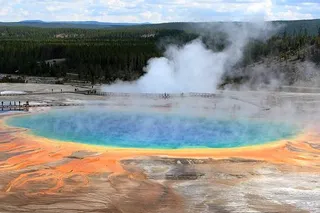What’s the News: For the first time, astronomers have found molecular oxygen, which makes up about 20 percent of our air on Earth, in space. Using the large telescope aboard the Herschel Space Observatory
, a team of researchers from the European Space Agency and NASA detected the simple molecule
in a star-forming region of the Orion Nebula
, located about 1,500 light-years from Earth. This takes astronomers one step closer to discovering where all of the oxygen in space is hiding. What’s the Context:
Oxygen is the third most abundant element in the universe, right behind hydrogen and helium. Astronomers see individual atoms of oxygen in space all the time, particularly around massive stars, and believe that molecular oxygen (O2) should be common, too. Scientists expect to see one molecule of O2 for every 100,000 molecules of H2, according to the European Space Agency.
Astronomers hope that knowing the ...













